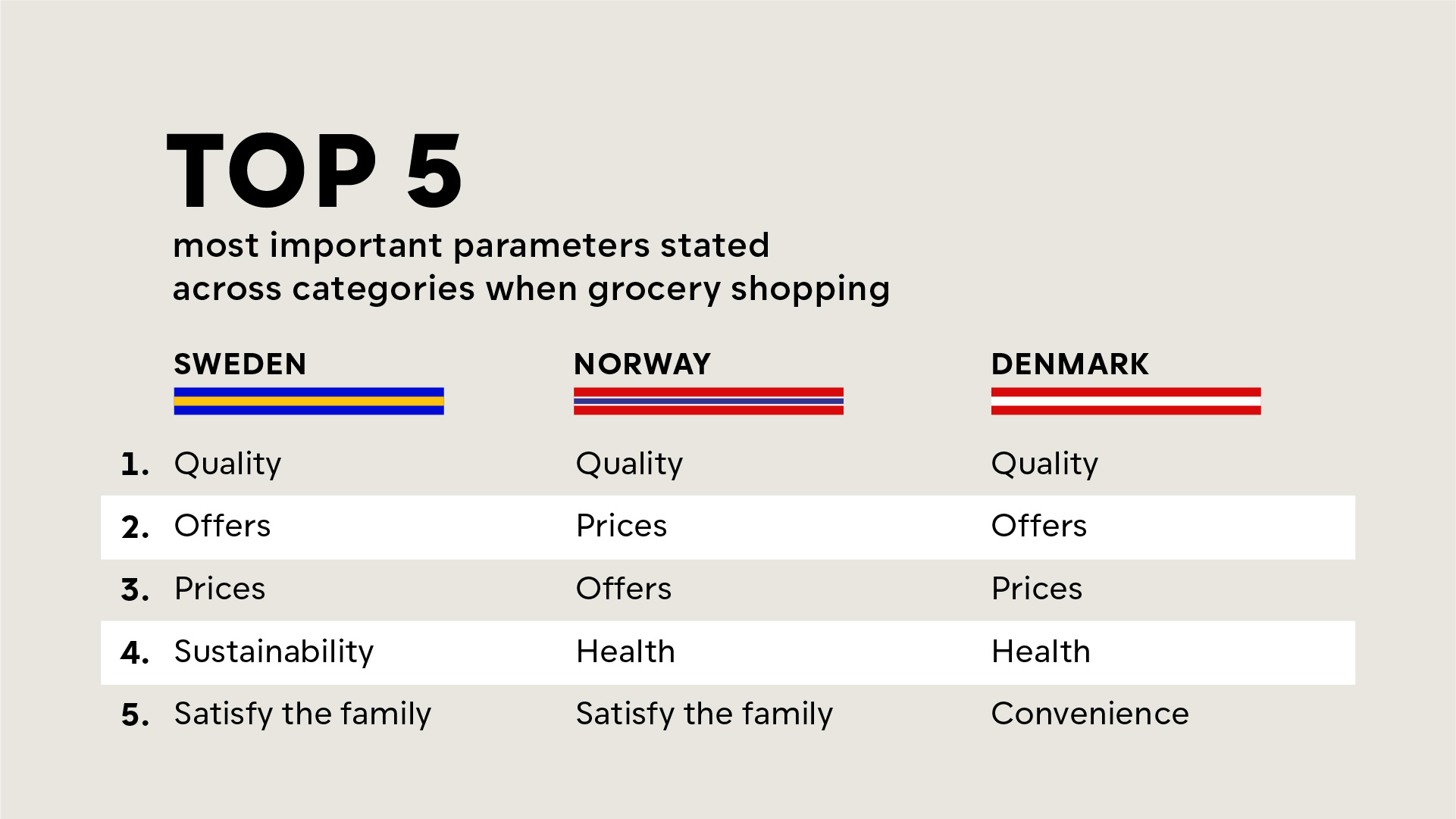
Brand Makes Price Redundant
Every brand is competing on popularity. From all the marketing levers brands can pull, price is often the favourite – and the easiest. However, it’s a double-edged sword. Lowering the price might work short-term, but long-term, it could be fatal. Instead, companies should focus on diversification and brand-building to make price a tactical lever rather than a strategic one.
All companies are endlessly fighting for consumers. In doing so, many lower their price to win them over. Cut the price, and customers flood in seems to be the thinking. According to our recent consumer study, price is a top-three factor when Danes, Norwegians or Swedes go grocery shopping. So it makes great sense to do so.

Some industries wage price wars more often than others – especially retail. Yes, while the company with the lowest price might win a fight, it probably won’t win the war. You might maximise your sales volume, but you might cut your sales value in such a drastic way that it will hurt your profits and make it difficult to keep up the quality perception. There will always be someone who is willing to risk losing more money to beat you in the end. At the end of the day, isn’t the whole point of doing business creating value, not pushing volume?
On average, volumes would have to rise by 18.7 per cent just to offset the profit impact of a 5 per cent price cut, according to McKinsey. And your costs don’t decrease because you lower your prices. They stay the same while you eat off your margins. As the McKinsey report states, “A strategy based on cutting prices to increase volumes and, as a result, to raise profits is generally doomed to fail in almost every market and industry.”
Quality Over Price
Often, we hear the argument that customers only want a low price. If you don’t sell your product the cheapest, people will just go somewhere else, it is thought. You’re partly right; price is important. But there is a significant difference between being cheap, and being the cheapest. When consumers declare price as the main driver for purchase, it isn’t so much about grabbing the cheapest option available, as it is about buying a product that brings value for money.
Changing the price changes consumers’ expectations of your product. It will nurture quality concerns while decreasing your perceived brand value. And you’ll teach people to delay their purchase, awaiting your next price promotion. Your brand becomes a commodity that doesn’t mean anything besides functionality and price. And when the price has dropped, it cannot be increased. You enter a competition where price is all that matters and brand loyalty is redundant. Because, if people buy your product because of the price, they are loyal to the price, not necessarily the brand. And price can’t create long-term loyalty the same way as brand.
Navigating the Price War
If you want to win or avoid a price war, you need to prepare yourself. When a competitor is cutting prices, investigate it. Don’t act hastily. Perhaps, they are only offering low prices in a local area. Perhaps they are intentionally and strategically losing money doing it to drive traffic in other categories. Or maybe it’s only time-bound, and the prices will go up again after a while.
Research what matters to your consumers. Many value quality, convenience or sustainability more than price. Low pricing and great offers can recruit new customers, but you want to retain consumers by brand and quality, not just price. You want to create differentiating and distinctive assets in your product that cannot easily be replicated, and price is not one of them. Creating and nurturing these assets is the only way to create long term sales.
All that said, the price needs to be right on the first go. Often, companies estimate by gut feeling, their competition or based on production expenses. But that is an inside-out way of doing it. Instead, products should be priced from consumers’ expectations through surveys and interviews. Van Westendorp’s Price Sensitivity Meter is a handy tool in the process of finding your optimal price range.
Your price is a reflection of your brand and product value. If you set the price too low, you’ll tell consumers that your products aren’t worth that much. So to exit the price war, you should focus on developing your brand assets in a differentiating and distinctive way, by underlining what makes your product just that. Communicate what makes you stand out in the market. People will buy into your brand when they buy from you, consciously or subconsciously. So, try all you can to make it matter about other things than just price.
